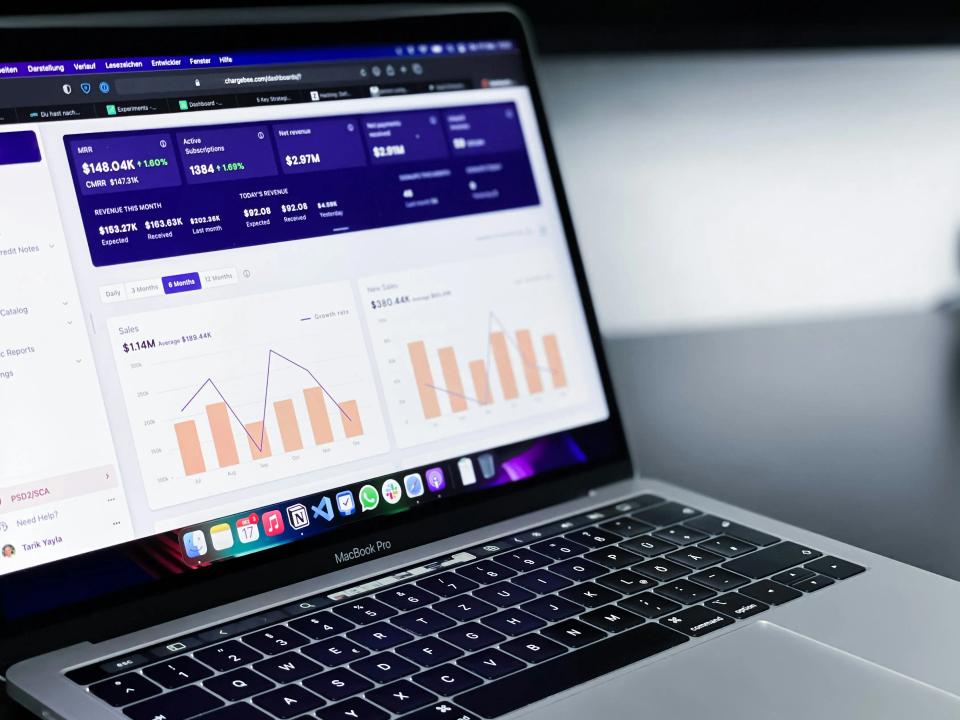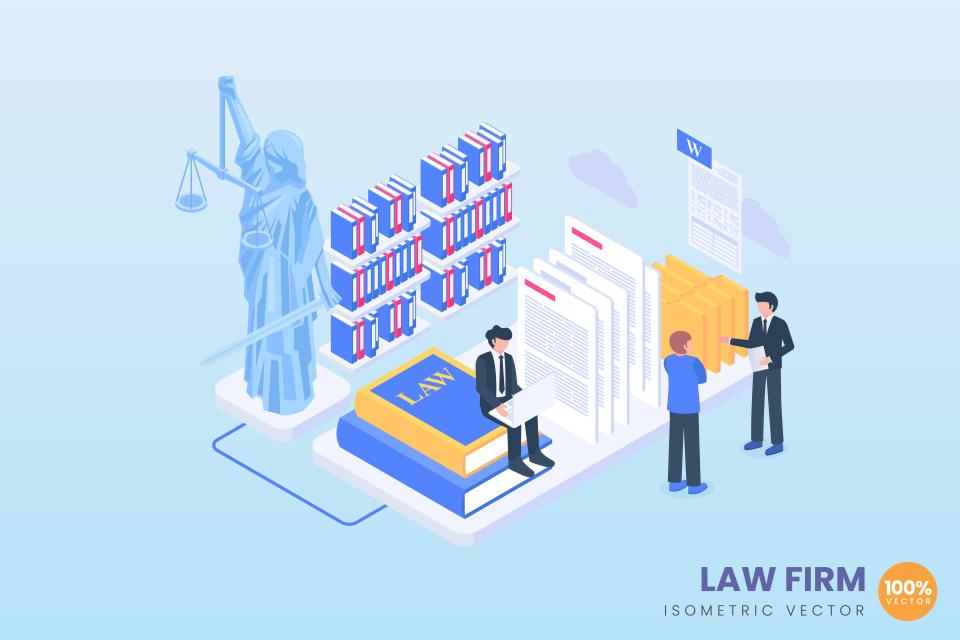Your app is bleeding users. Silently. Every lag, every crash, every frustrating moment pushes them away. Did you know a shocking 25% of users abandon apps after just one poor experience? That's a quarter of your potential audience, gone, perhaps forever. You've poured your heart, soul, and budget into creating something amazing, only to see it falter because of unseen performance gremlins.
These aren't just minor annoyances; they're business killers. Slow load times, unexpected crashes, a battery that drains like a sieve, an unresponsive interface – these are the culprits. They decimate user experience, torpedo retention rates, and watch your revenue circle the drain. But what if you could fight back, smarter and faster than ever before? The AI revolution is here, offering a powerful arsenal of automation tools to proactively hunt down and obliterate these performance bottlenecks.
This isn't just another tech trend; it's your new secret weapon. In this post, we'll pull back the curtain and show you exactly how AI automation tools are transforming mobile app performance. We'll explore the critical areas AI can supercharge, reveal best practices for getting started, and even recommend tools that can give you an almost unfair advantage. At CaptivateClick, we're obsessed with building high-performing mobile apps that don't just function, they captivate. Let's dive into how you can achieve the same.
Why Mobile App Performance is Non-Negotiable in 2024
The Age of Impatience: User Expectations Soar
Users today have zero patience for sluggish apps. They expect lightning speed, flawless stability, and interactions so smooth they feel like an extension of their thoughts. In fact, a staggering 70% of users will abandon an app if it loads too slowly. Think about that – more than two-thirds of your potential users could vanish before they even see your app's core value.
This demand for perfection directly hammers your most crucial metrics. Poor performance is a lead weight on user engagement and retention; the average app loses a devastating 71% of its users within 90 days. For e-commerce or lead-gen apps, every single second of delay matters, with conversion rates dropping by 7% for each 1-second delay in page load time. Even your visibility suffers, as app store algorithms, like those on Google Play, increasingly prioritize speed and stability as ranking factors.
Your Reputation is on the Line
Beyond the numbers, your brand's reputation and the trust you build with users are at stake. Frequent bugs are a major turn-off, leading to an alarming 88% of users uninstalling apps due to poor performance. In hyper-competitive sectors, like dating apps, this can mean a 65% uninstall rate if your app is buggy. Conversely, brands that prioritize performance, like LexEnergy, have seen tangible benefits, boosting customer trust by significantly reducing crash rates using AI-driven monitoring tools. In 2024, a high-performing app isn't just nice to have; it's your ticket to survival and dominance in a crowded marketplace.
Understanding AI's Role in Mobile App Performance Optimization
What Exactly is AI Doing for Your App?
When we talk about AI in mobile app performance, we're not talking about sentient robots taking over your code. Instead, think of highly intelligent assistants leveraging technologies like Machine Learning (ML), Predictive Analytics, and Natural Language Processing (NLP). For instance, ML models can learn from vast datasets of app behavior to predict future issues, much like how Dynatrace uses AI to forecast potential crashes by analyzing historical data patterns.
Predictive analytics takes this a step further, identifying subtle warning signs that human testers might miss. Meanwhile, NLP can sift through mountains of user feedback, with tools like Instabug’s AI parsing user reviews to pinpoint performance-related complaints, turning raw complaints into actionable insights. This intelligent automation allows for a far more sophisticated approach to optimization.
Moving Beyond the Old Ways
Traditional app optimization often feels like a game of whack-a-mole: an issue pops up, you fix it, another appears. AI flips the script, offering a proactive rather than reactive approach. It provides scalability that manual methods can't match; imagine Testim Mobile executing over 10,000 test variations in parallel on virtual devices, catching rendering issues across a dizzying array of device-OS combinations. This depth of analysis uncovers insights that were previously hidden.
The core benefits are compelling. You'll see increased efficiency in your testing and monitoring processes, freeing up your valuable developer resources. AI enables the early detection of potential disasters, allowing you to fix them before they impact your users. Ultimately, this leads to data-driven decision-making for optimization and even opens the door to personalized user experiences based on real-time performance data, ensuring your app feels tailor-made for every user.
Key Areas Where AI Automation Tools Supercharge App Performance
Your app's success hinges on a flawless user experience. AI automation tools are the elite forces you deploy to ensure every interaction is smooth, fast, and reliable. Let's explore the battlegrounds where AI makes the biggest impact.
AI-Powered Automated Testing & Quality Assurance (QA)
Forget tedious manual testing that barely scratches the surface. AI brings intelligence and scale to your QA process, ensuring your app is robust before it ever reaches your users. Imagine AI tools that generate smart test cases like Testim does, covering edge scenarios you hadn't even considered, which for one banking app, led to a 62% reduction in registration flow crashes. This is the power of ai for mobile testing.
Visual bugs can be particularly insidious, ruining UIs across countless device and OS variations. AI-driven visual validation tools, such as Applitools, can automate checks across over 2,000 device-OS combinations, detecting pixel misalignments and color inconsistencies with superhuman accuracy, often reducing UI bugs by a significant margin. Furthermore, AI excels in performance and load testing, with platforms like HeadSpin simulating real-world network conditions to identify latency spikes before your users do. AI can also intelligently detect and triage bugs, prioritizing the critical ones based on their potential impact, so your team focuses on what truly matters.
Real-time Performance Monitoring & Anomaly Detection
What if you could see problems before they happen? That's the promise of AI in real-time app performance monitoring ai. Predictive analytics, a cornerstone of tools like Dynatrace's Davis AI, can forecast potential crashes or slowdowns, giving you a crucial head start and slashing mean time to resolution by as much as 55%. This isn't just about catching errors; it's about preventing them.
This intelligence extends to alerting systems. Instead of drowning in a sea of notifications, AI provides intelligent alerting, cutting through the noise to highlight only the most critical issues demanding immediate attention. When problems do arise, AI assists in root cause analysis, helping pinpoint the source of performance degradation with remarkable speed. For example, Instabug’s Smart Resolve 2.0 can automatically flag memory leaks in video streaming apps, prioritizing them based on how severely they impact users.
AI for Optimizing Resource Management
A power-hungry app is a quickly deleted app. AI tools are becoming indispensable for optimizing how your app consumes precious device resources. They can analyze code to identify and suggest fixes for power-hungry operations, directly impacting battery life. For instance, Firebase’s Performance Monitoring helped one fitness app achieve a 23% reduction in battery consumption by optimizing background location updates.
Beyond battery, AI scrutinizes memory and CPU usage, with tools providing detailed analysis and recommendations for optimization. Network call optimization is another critical area. Inefficient data requests can cripple app speed and inflate user data costs. AI can identify these bottlenecks, as seen when AWS Device Farm’s network virtualization tests helped a ride-sharing app reduce data usage by 18% through smarter API calls.
Enhancing User Experience (UX) through AI Insights
A responsive app is a beloved app. AI provides deep insights that directly improve app user experience ai. This can manifest as personalized in-app experiences, where AI adapts the UI or content based on individual user behavior and the app's real-time responsiveness. Imagine an e-commerce app where Google’s ML Kit dynamically resizes product images for low-RAM devices, improving load times by a crucial 31%.
AI, particularly Natural Language Processing (NLP), is also a game-changer for understanding your users. It can process thousands of app store reviews and support tickets, automatically identifying and categorizing performance-related complaints. This feedback loop is invaluable, as demonstrated when Qualitest’s feedback analyzer helped categorize performance complaints, enabling targeted A/B tests that boosted retention by 19%. Even A/B testing itself gets an AI boost, with algorithms determining winning variations faster and more accurately than traditional methods.
AI-Assisted Code Optimization & Refactoring
Clean, efficient code is the bedrock of a high-performing app. AI is now stepping in as a powerful assistant for developers, with tools that scan codebases to suggest performance improvements or identify anti-patterns. For example, Testim’s root cause analysis can pinpoint issues like unnecessary re-renders in React Native code, which led to a 28% reduction in CPU strain for one app.
This assistance extends to automated refactoring suggestions. AI can propose changes to make code cleaner, more efficient, and easier to maintain. Consider the impact when Applitools’ automated refactoring suggestions helped a media app eliminate 12,000 lines of redundant code, significantly enhancing maintainability and reducing the chances of future bugs. This proactive approach to code health is vital for long-term app success.
Top AI Automation Tools for Mobile App Performance
The landscape of AI tools is constantly evolving, but some stand out for their innovative approaches to mobile app performance. Remember, the best tool for you depends on your specific needs, but here are some leading examples and the types of AI-driven features they offer. Disclaimer: This is not an exhaustive list, and new tools emerge regularly. Always do your own research!
For Testing & QA
When it comes to ensuring your app is bulletproof, AI-powered testing tools are your frontline defense.
- Testim Mobile: This tool shines with its AI-generated test cases and cross-platform stability analysis. It's particularly beneficial for development teams looking to catch regressions early and ensure stability across diverse devices, as evidenced by its success in reducing banking app crashes by 62%.
- Applitools: Famous for its Visual AI validation and dynamic content testing capabilities, Applitools is a must for teams obsessed with pixel-perfect UIs. It excels at catching visual bugs that humans miss, reportedly detecting 34% more UI bugs than manual methods, making it invaluable for brand-conscious apps.
For Monitoring & Analytics
Understanding what's happening under the hood, in real-time, is crucial.
- Dynatrace: With its powerful AI engine, Davis, Dynatrace offers real-time anomaly detection and sophisticated root cause analysis. It benefits operations teams and developers by quickly identifying and diagnosing complex performance issues, significantly slashing Mean Time To Resolution (MTTR) by 55%.
- New Relic Mobile: This platform provides comprehensive mobile monitoring with AI-driven insights into crashes and performance bottlenecks. It's a strong choice for teams needing granular data across Android and iOS, helping them correlate performance with user experience.
For UX & Personalization (with performance impact)
AI can directly enhance user experience by ensuring the app performs optimally for each individual.
- Firebase Performance Monitoring (with ML Kit integration): Google's Firebase offers ML-powered performance insights and detailed crash reporting. Its integration with ML Kit allows for smart adaptations, like the example where it helped cut battery drain by 23% by optimizing background tasks, directly benefiting end-users.
General AI Platforms with Mobile Applications
Broader AI platforms also offer robust capabilities for mobile app optimization.
- AWS Device Farm: While known for real device testing, AWS Device Farm also incorporates AI for smarter testing and offers features like network virtualization. This benefits teams needing to test under diverse, real-world conditions, helping to reduce data usage by 18% in one case through optimized network requests.
Each of these tools leverages AI in unique ways, but all aim to make your app faster, more stable, and more delightful for your users.
Best Practices for Implementing AI in Your Mobile App Optimization Strategy
Jumping into AI without a plan is like sailing without a compass. To truly harness the power of AI for mobile app optimization, you need a strategy. Follow these best practices to ensure your AI implementation delivers real results and doesn't just become another expensive experiment.
First, define clear objectives. What specific performance demons are you trying to exorcise with AI? Are you battling slow load times, frequent crashes, or excessive battery drain? Knowing your enemy is half the battle. Without clear goals, you won't be able to measure success or justify the investment.
Next, start small and iterate. Don't try to boil the ocean by implementing a dozen AI tools at once. Pick one critical problem area, select an appropriate AI tool, and integrate it. Learn from this initial implementation, gather data, and then expand. This incremental approach minimizes risk and allows your team to build expertise.
Remember, data is king. AI models are only as good as the data they're trained on. Ensure you have access to high-quality, comprehensive data covering various devices, network conditions, and user behaviors. As highlighted by HeadSpin’s extensive global testing locations, capturing regional performance variations is crucial for robust AI models.
Choose the right tools for your specific needs, your existing tech stack, and your team's skillset. Not every AI tool is a perfect fit. Do your due diligence, run pilot programs, and select solutions that genuinely solve your problems and integrate smoothly. Speaking of integration, AI tools should complement, not complicate, your existing workflows, especially your CI/CD pipeline and development processes.
Crucially, human oversight is still vital. AI is an incredibly powerful assistant, but it's not (yet) a replacement for skilled developers, testers, and marketers. Use AI to augment human intelligence, not supplant it. For instance, New Relic’s dashboards highlight AI-identified issues, but developers provide the context for fixes.
Finally, continuously monitor and refine. AI models learn and improve over time, and so should your optimization strategy. Regularly review the insights provided by your AI tools, adjust your approaches, and keep an eye on how your app's performance metrics are trending. This commitment to ongoing improvement, like Dynatrace’s models retraining weekly to improve prediction accuracy, is key to long-term success.
Practical Tips for Different Roles
AI-driven performance optimization isn't just for one department; it's a team sport. Here’s how different roles can leverage these powerful tools to contribute to a stellar app experience and boost critical metrics like user retention mobile apps.
For Developers: Your AI Co-Pilot in Code
Developers, AI is here to make your life easier and your code cleaner. Leverage AI for early bug detection by integrating tools like Testim’s AI tests directly into your CI/CD pipelines. Catching regressions before they hit production saves immense time and frustration. This proactive approach means fewer late-night emergencies and happier users.
Dive deep into your app's internals by using AI-powered profilers, such as those available in Firebase Performance Monitoring, to identify code-level inefficiencies and memory leaks during nightly builds or even in real-time. Don't stop there; explore AI tools that offer automated refactoring suggestions. These can help you write cleaner, more performant code, reducing technical debt and making future development smoother. Think of AI as your tireless co-pilot, constantly scanning for ways to improve.
For Digital Marketers & Product Managers: Turning Performance into Profit
Marketers and Product Managers, performance data is your new best friend. Use AI insights from performance monitoring tools like New Relic to understand user pain points at a granular level. When you see where users are struggling or dropping off due to performance issues, you can make smarter decisions about your product roadmap and marketing messages.
Correlate performance metrics with your key engagement and conversion data. How does a 0.5-second improvement in load time impact sign-ups or purchases? AI can help you draw these direct lines, proving the ROI of performance optimization. Armed with this data, you can confidently advocate for performance improvements, using insights from tools like Instabug’s sentiment analysis to prioritize fixes that address the most acute user frustrations and ultimately enhance user retention.
The Future of AI in Mobile App Performance
The journey of AI in mobile app performance is far from over; in fact, we're just scratching the surface of what's possible. The current wave of AI automation tools has already proven transformative, but the horizon promises even more sophisticated and integrated solutions. Get ready for a future where app performance is not just monitored and fixed, but dynamically and intelligently self-optimized.
Emerging trends point towards more autonomous optimization. Imagine AI systems that don't just suggest fixes but, with appropriate safeguards, implement them automatically. Hyper-personalization will also deepen, with AI adjusting app behavior in real-time based not just on user preferences but also on the device's current performance state and network conditions. For example, on-device Machine Learning, using frameworks like TensorFlow Lite, could enable apps to dynamically disable heavy animations or reduce background activity if the device is overheating or low on battery, all without cloud dependency.
Furthermore, AI will play an increasingly critical role in edge computing for mobile apps. By processing data closer to the user, AI can enable faster response times and more efficient resource utilization, especially for latency-sensitive applications. It's clear that AI is not just a fleeting trend but will become an even more integral, almost invisible, layer in the fabric of high-performing mobile applications. Staying ahead of these advancements will be key for any team serious about delivering exceptional user experiences.
Conclusion: Elevate Your App with AI-Driven Performance
We've journeyed through the unforgiving landscape of mobile app performance, where user patience is thin and the cost of a glitch can be catastrophic. You've seen how common bottlenecks can sabotage your success, but more importantly, you've discovered a powerful ally: AI automation. These intelligent tools are no longer futuristic concepts; they are here, ready to revolutionize how you build, test, and maintain your mobile applications.
The benefits are undeniable. By leveraging AI, you can deliver a vastly superior user experience, leading to significantly higher engagement and retention. You can slash development time, reduce frustrating bugs, and gain a powerful competitive advantage in an increasingly crowded marketplace. As we've seen, 72% of users can churn within just 30 days – AI is your best defense against becoming another statistic.
Now is the time to stop firefighting and start proactively engineering excellence. Empower your teams, explore the AI tools available, and begin integrating these smart solutions into your workflow. The path to a top-performing app, one that truly captivates and retains users, is paved with intelligent automation.
What are your biggest mobile app performance challenges? Are you already using AI tools to tackle them? Share your thoughts and experiences in the comments below!
Ready to transform your mobile app's performance and captivate your audience? CaptivateClick specializes in leveraging cutting-edge AI strategies and expert development to build apps that truly perform. We've seen firsthand how AI-driven optimization can deliver tangible ROI, much like the 40% boost in app retention LexEnergy achieved by focusing on performance. Contact us today for a consultation!













